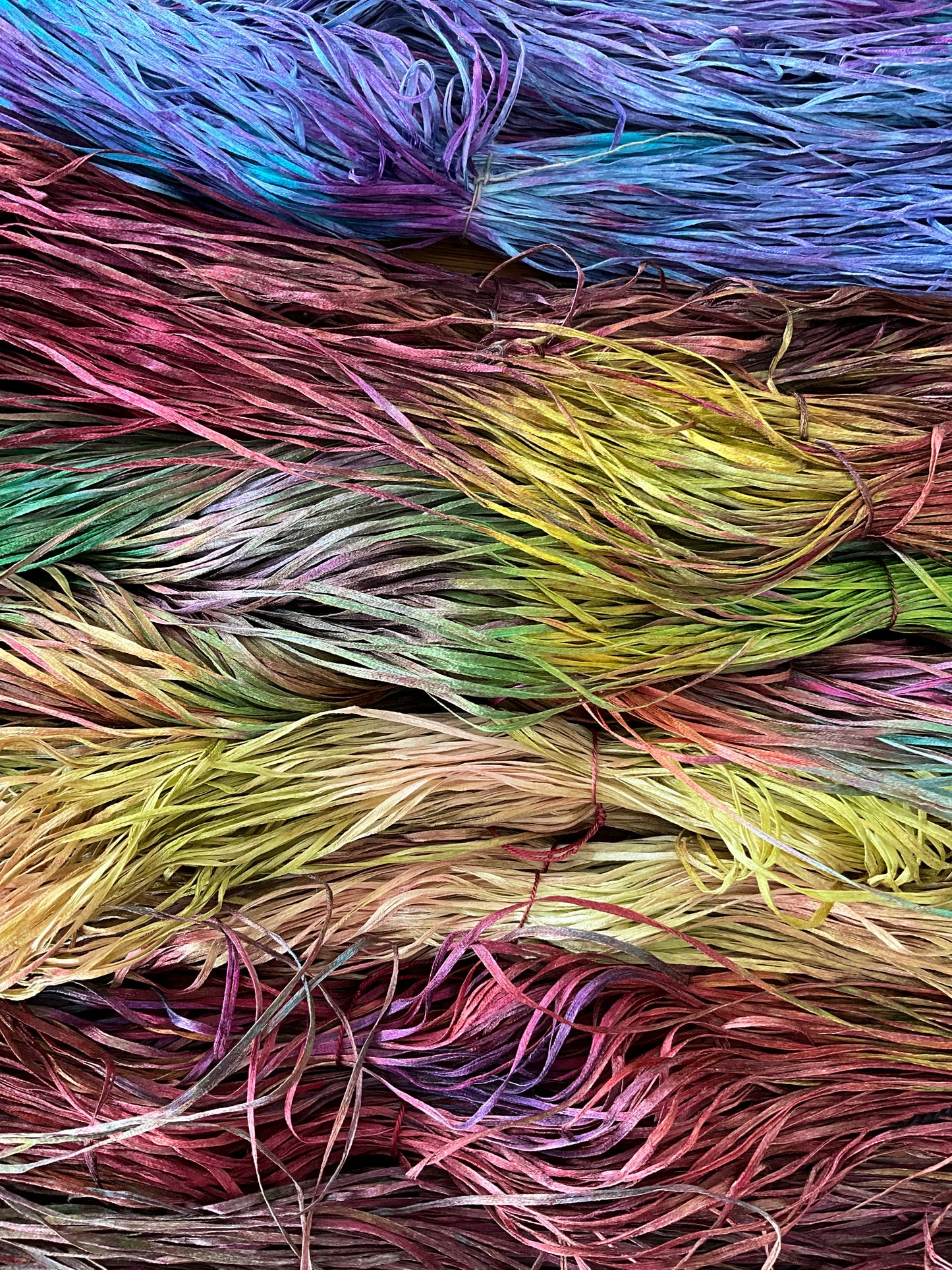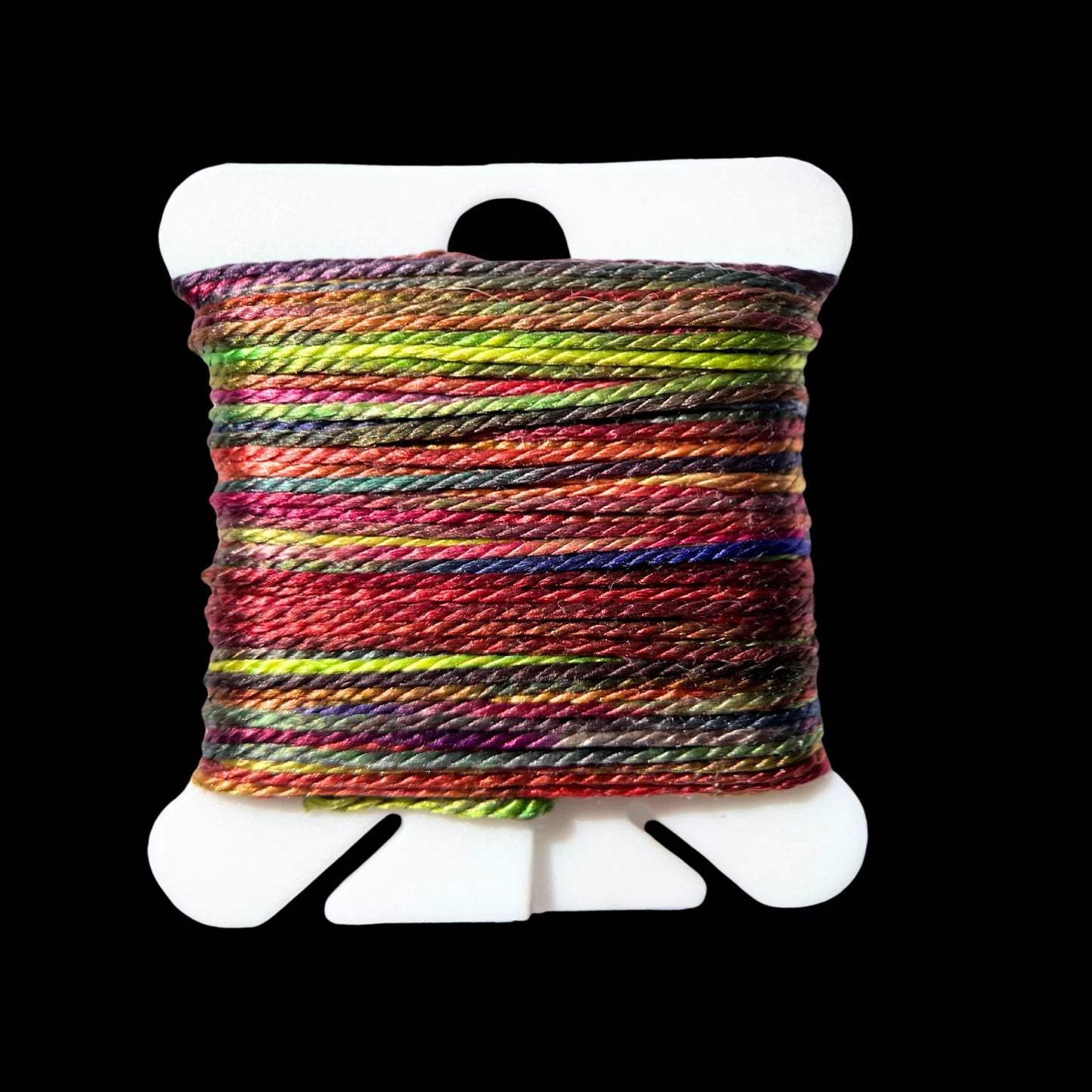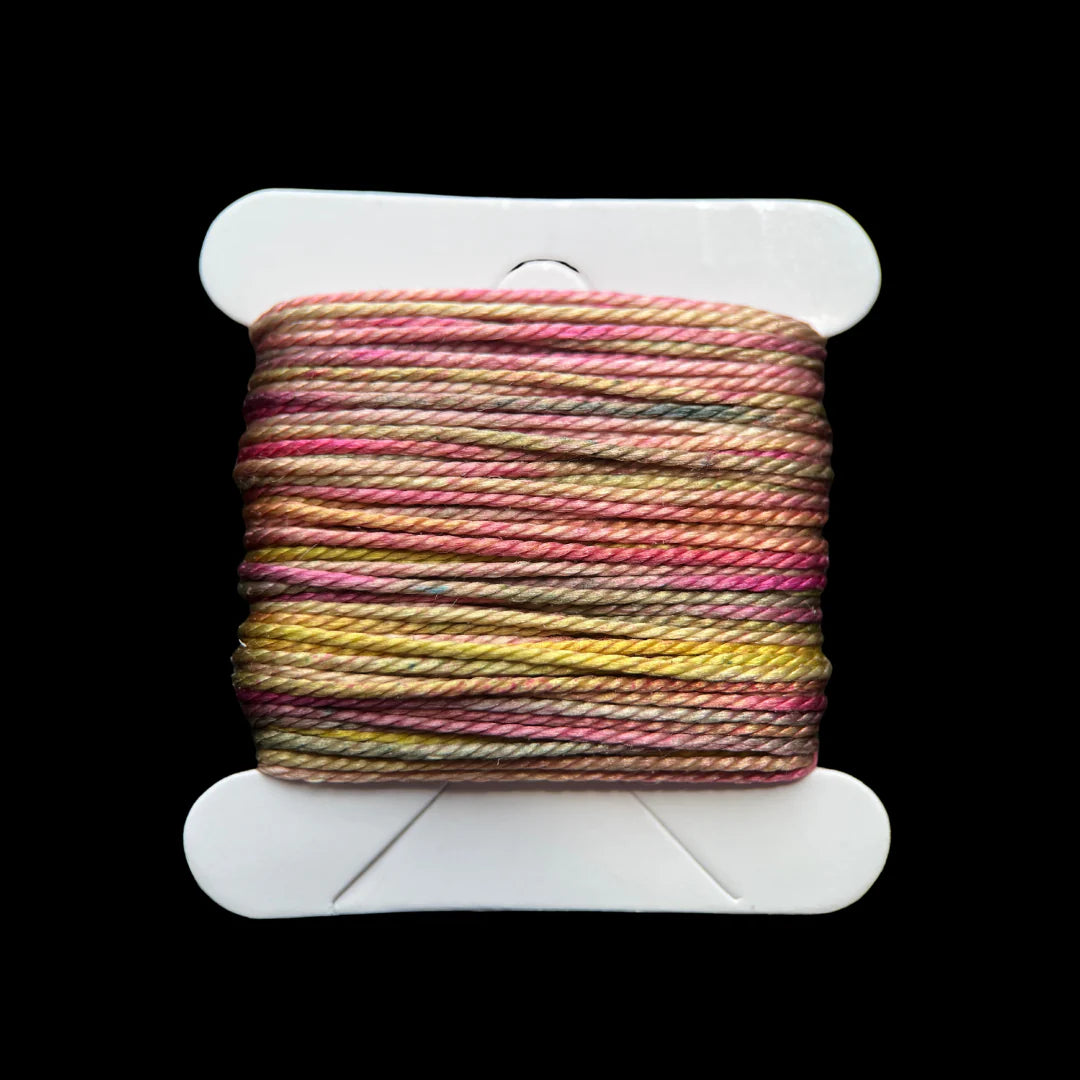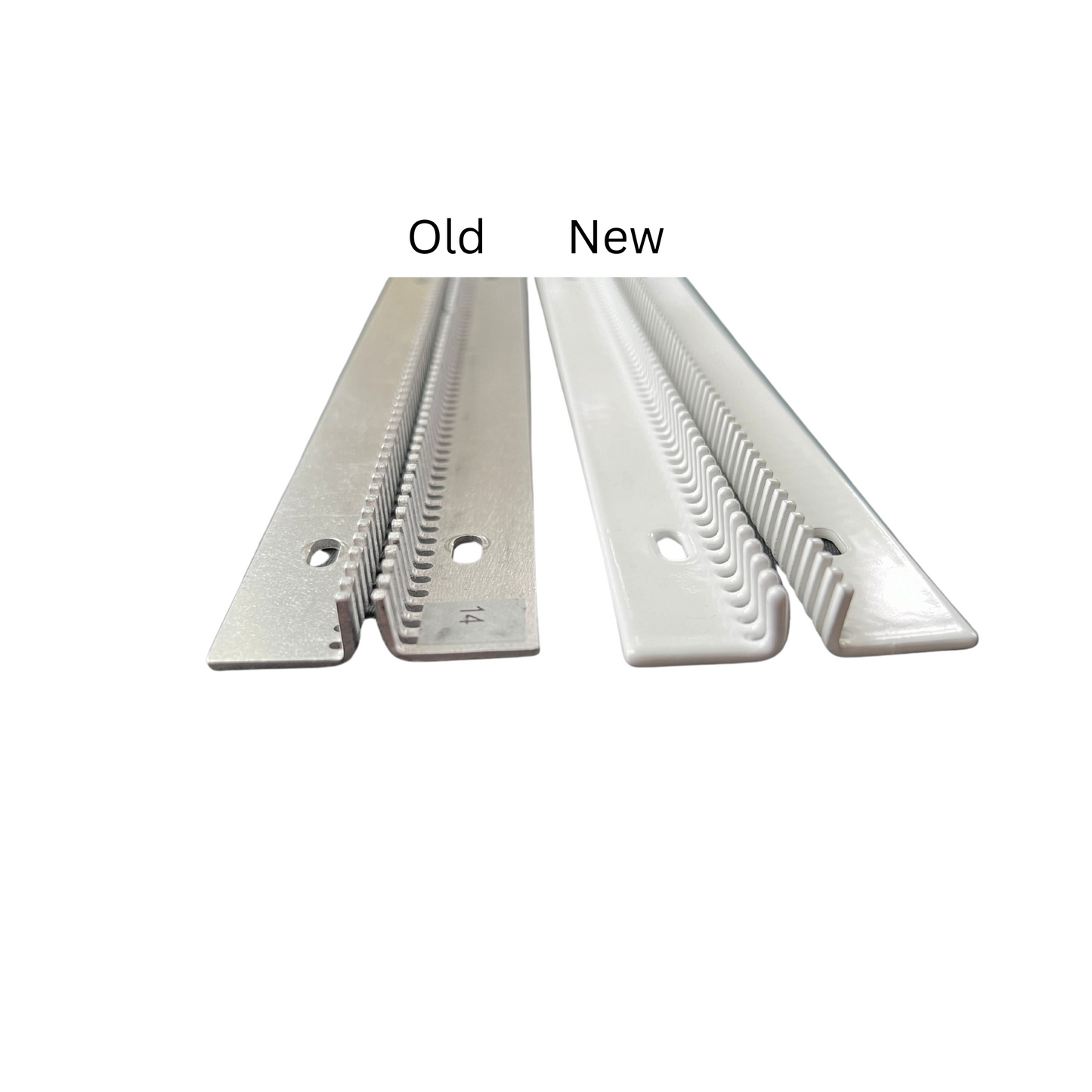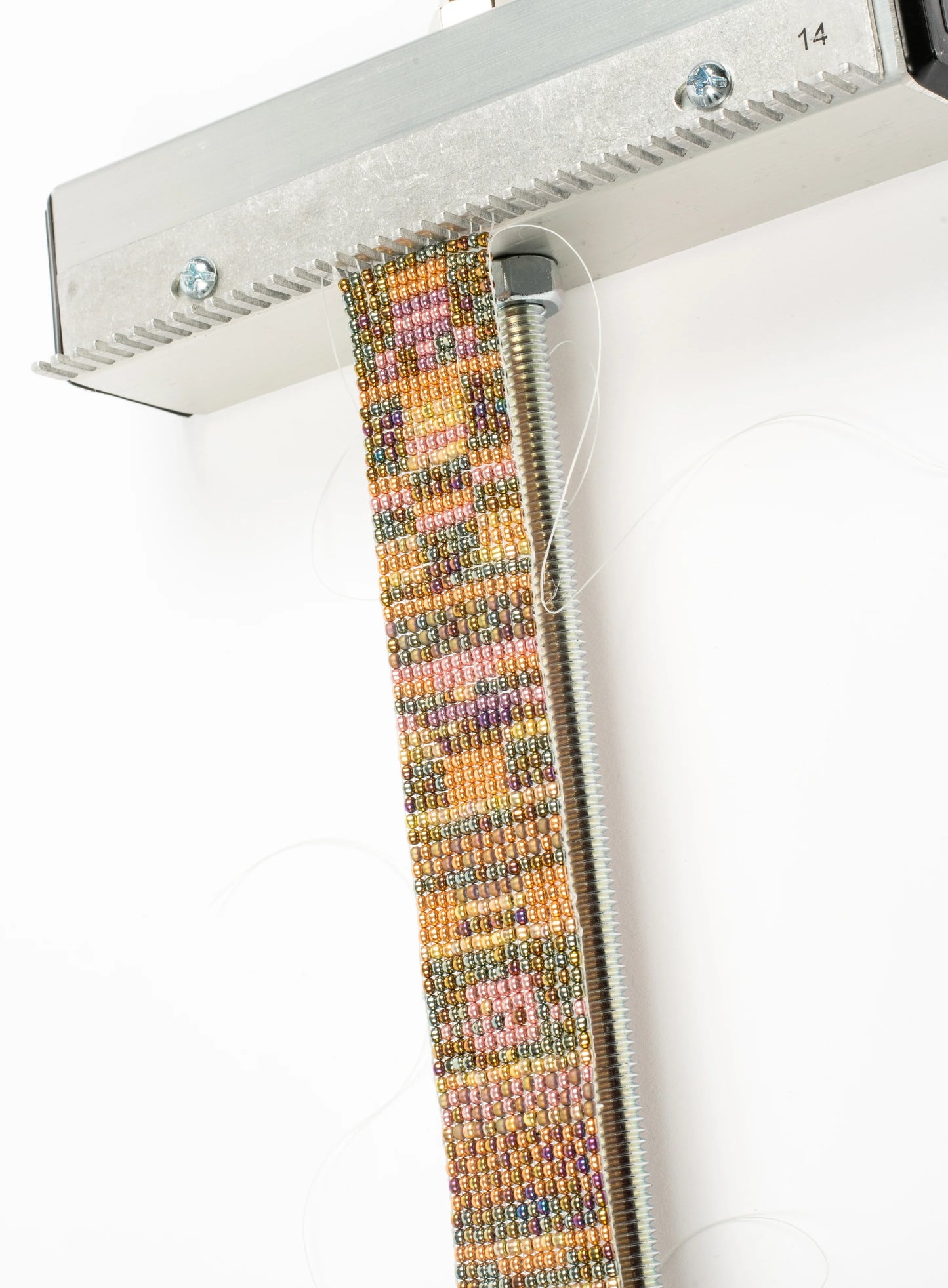
One of the biggest problems beginning tapestry weavers have is that, as they weave up, they begin to pull in the edges of their piece. In the language of tapestry, we’d call this drawing in your selvedges. This can cause the piece to look sloppy and uneven.
While even a seasoned tapestry weaver is susceptible to pulling-in, there are a few tricks that can help you to weave with straight selvedges!
1.) Measure!
Being cognizant of whether or not you are pulling in is a good way to prevent it. Measure often (every inch and a half or so) and reweave if you notice you are pulling in.
2.) Don’t weave selvedge to selvedge for large sections
If you lay a straight line of tapestry weft into the shed the line of weft remains straight until you change the shed. Once you change the shed the weft becomes scalloped in every place there is a warp. If you’ve just laid in a straight weft, in order to produce enough weft to allow for those scallops, extra weft will be pulled from the selvedges of your tapestry. There just isn’t enough weft to go around. When using discontinuous wefts (not weaving straight across), compensation for this almost happens naturally. You’ve got the extra weft just because every start and ending creates a little more yarn in the joining places.
3.) Bubble

Bubbling (see the picture) is important for making sure you are using plenty of weft thread so you don’t pull in on the sides. Here’s how:
Make sure the weft is wrapped tightly enough around the side warp to not have a baggy loop but not so tightly that it draws in at all. Lay the weft into the warp in a curve and then take your finger and push down on that curve about every three or four inches so that the curve becomes a series of humps. Change the shed. Do this again. Change the shed. do this again. Then take your beater and beat it all together. If you’ve done this correctly there will be no loops of wefts at the selvedges, the selvedges will not pull in at all, and there will not be little extra blobs of weft sticking out anywhere in the weaving. What you will see is a smooth patch of flat weaving. The best way to test your skill at this is to weave simple stripes for a long distance. If you can accomplish that, you’ve mastered the art of straight selvedges. And seriously, accomplishing stripes that travel from selvedge to selvedge and don’t pull in is quite the feat!
4.) Tension
This is where a good loom comes in! You need really good tension to weave tapestry. On a Mirrix Loom, you have the ability to get just that. If you are using a Mirrix Loom and your warp threads feel loose, simply tighten them up.
Don’t have a loom and ready to get started? We’ll give you a personalized Mirrix loom recommendation here!

